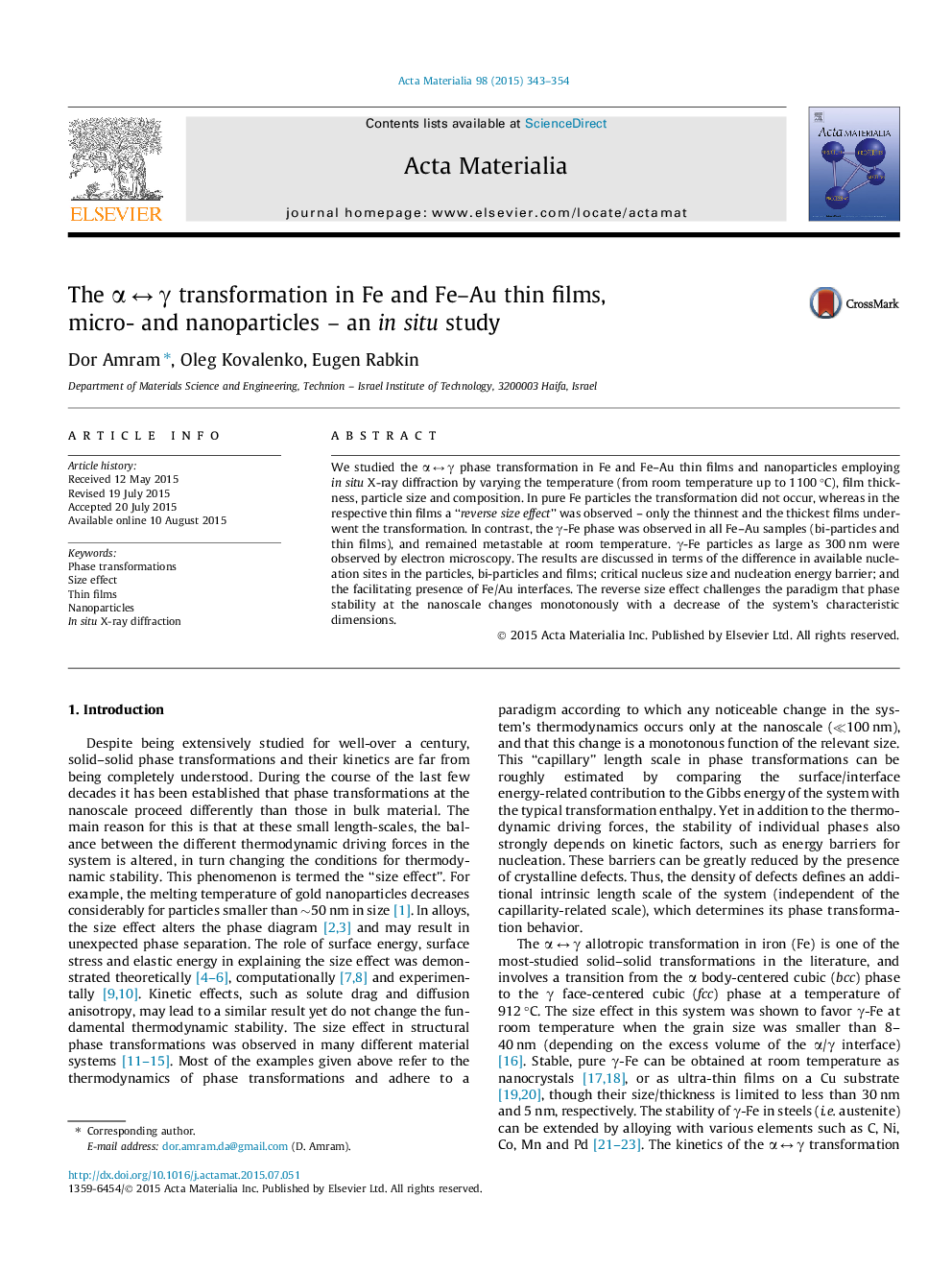| Article ID | Journal | Published Year | Pages | File Type |
|---|---|---|---|---|
| 1445284 | Acta Materialia | 2015 | 12 Pages |
We studied the α ↔ γ phase transformation in Fe and Fe–Au thin films and nanoparticles employing in situ X-ray diffraction by varying the temperature (from room temperature up to 1100 °C), film thickness, particle size and composition. In pure Fe particles the transformation did not occur, whereas in the respective thin films a “reverse size effect” was observed – only the thinnest and the thickest films underwent the transformation. In contrast, the γ-Fe phase was observed in all Fe–Au samples (bi-particles and thin films), and remained metastable at room temperature. γ-Fe particles as large as 300 nm were observed by electron microscopy. The results are discussed in terms of the difference in available nucleation sites in the particles, bi-particles and films; critical nucleus size and nucleation energy barrier; and the facilitating presence of Fe/Au interfaces. The reverse size effect challenges the paradigm that phase stability at the nanoscale changes monotonously with a decrease of the system’s characteristic dimensions.
Graphical abstractFigure optionsDownload full-size imageDownload high-quality image (211 K)Download as PowerPoint slide
